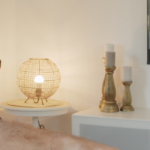MED-EL
Published May 15, 2019
Rehab At Home: How Can Sabotage Help My Child’s Language Skills?

Today’s Rehab At Home post is about sabotage. Although the word ‘sabotage’ has a slightly negative connotation, in rehabilitation we use ‘sabotage’ to help children learn about communication. Using sabotage creates a need or reason for a child to talk.
We’re going to look more at why we use sabotage, and explain some ways you can use it to help your child’s language skills.
Why Should I Use Sabotage?
Using sabotage creates a meaningful and interesting reason for your child to initiate communication. It provides an opportunity for your child to tell another person about a problem or ask for help to solve it. It allows you to teach your child words for talking about problems and asking for help. Using sabotage teaches children that their voice is meaningful and they can use it to make things happen, to get help, or to get what they want. Some children may use pointing, gesturing, pushing, or pulling to get what they want. But you can use sabotage to teach and encourage them to use words instead.
How Can I Use Sabotage To Help My Child’s Language Skills?
Create an interesting problem or a surprise for your child. Wait for them to notice it, or draw their attention to it. Then wait for them to ask for help, label the problem (“broken”) or the solution (“clean it”). If your child doesn’t know what to say, model a phrase and encourage them to have a turn using it. . Use sabotage to teach your child word such as “uh oh”, “not working”, “hurt”, “gone”, “finished”, “help”, “more”, “open”.
In this video, Matthew and his mother are preparing to paint pictures. Matthew’s mother forgets the paint, creating an opportunity for Matthew to tell her what is missing and to ask for what he needs.
Here are some other ways you can use sabotage to teach your child new language:
What Activities Can We Do With Younger Children?
- Children often need help opening snacks, doors, boxes, and drawers. Use this opportunity to encourage your child to use their words to ask for help. Rather than opening the snack for them, give the snack to your child unopened. Then wait for them to ask you for help. Expect them to imitate “Open” or “Open the bag” depending on their level of skills.
- Put a surprise in an unexpected place such as in your child’s pocket, in their shoe, or on their pillow. This could be one of their small toys, a coloring pencil, or one of their belongings from another room such as a comb. Wait for your child to find the surprise, or draw their attention to it. Teach them phrases to label the surprise such as “look!”, or “I found …”. Add new words such as “That is a surprise”, “I wonder how that got there” and “Where should we put it now?”.
What Activities Can We Do With Older Children?
Once your child knows a routine well, like brushing their teeth or playing a game, use sabotage by forgetting a step or doing something incorrectly. For example:
- Forget to put the toothpaste on their toothbrush
- Give them a fork for their cereal rather than a spoon
- Set a game up incorrectly by turning the board upside down
- Start reading them a story from the last page
Then, wait for your child to tell you what is wrong and what to do to fix the problem. Take this opportunity to use ‘Expansion and Extension’ to demonstrate more complex phrases and sentences to extend their communication skills. If your child doesn’t spot the problem, point it out for them, for example, “Oh no, I forgot the toothpaste!”.
Be mindful that there can be a fine line between providing a learning moment through sabotage, and creating a stressful situation for your child. If your child is having difficulty indicating to you what the problem is and/or a way to resolve it, turn the sabotage into a teaching moment. Show your child the language that could be used in that situation to help solve the problem, and support them by solving it together! This will help them to develop the skills needed to solve the problem in the future. Creating a ‘sabotage’ moment is powerful, but positive learning experiences are the ones that will lead to the greatest success.
Interested in more from Rehab At Home? Check out all the videos on our Rehab At Home intro page.
Find out more about how cochlear implants work and how they could help you or your child.
MED-EL
Was this article helpful?
Thanks for your feedback.
Sign up for newsletter below for more.
Thanks for your feedback.
Please leave your message below.
Thanks for your message. We will reply as soon as possible.
Send us a message
Field is required
John Doe
Field is required
name@mail.com
Field is required
What do you think?
MED-EL


